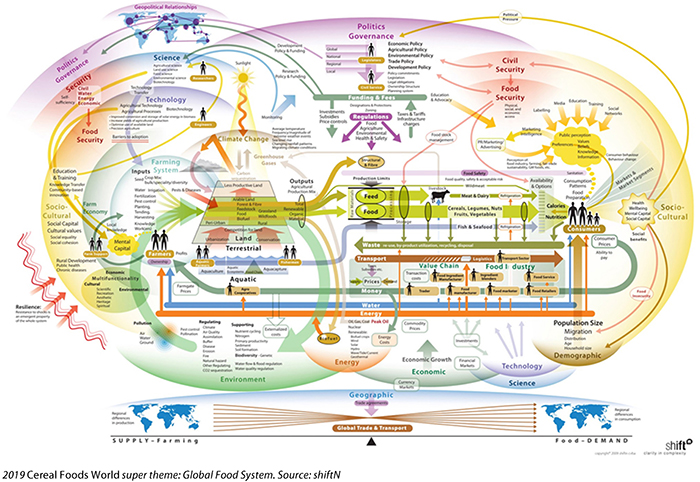 Shaped by broad consumer, socio-political, environmental, agricultural, and technological trends, the global food system (GFS) is extremely complex and constantly changing. Safe and sustainable food is at the very nexus of our survival. We face grand challenges from the increasing world population and reduction in natural resources. New and improved analytical measurements and techniques are essential in helping to maintain a continuous, safe, nutritious, quality, and palatable supply of foods.
Shaped by broad consumer, socio-political, environmental, agricultural, and technological trends, the global food system (GFS) is extremely complex and constantly changing. Safe and sustainable food is at the very nexus of our survival. We face grand challenges from the increasing world population and reduction in natural resources. New and improved analytical measurements and techniques are essential in helping to maintain a continuous, safe, nutritious, quality, and palatable supply of foods.
The 2019 volume of Cereal Foods World (CFW) is dedicated to exploring the impact of the GFS on grain science. This “super theme” will serve as an umbrella under which each issue will examine a different facet of the GFS. Inspiration for the GFS super theme came from a graphic developed by shiftN, a Belgian company that employs systems thinking and visualization, among other tools, to crack the code on large, complicated societal problems. This graphic powerfully illustrates the complex, interconnected web of factors that shape the GFS; it motivated us to expand our thinking beyond traditional grain science topics. 
The January-February issue of CFW initiates our exploration of the GFS by examining the analytical requirements for keeping the system functioning and effective. Measurements and methods to monitor and track food safety, sustainability, and quality as food moves across global trading and agro-food systems are featured.
Because grains provide more than 60% of the calories consumed worldwide, grain scientists play a central role in the GFS. New agricultural systems and innovations in global trade require continuous improvements in how we measure and monitor food quality and safety. Diane Miskelly, Westcott Consultants, Australia, discusses specific quality measures needed for Australian wheat export markets, providing an exemplar of best practices and techniques from which other countries may learn. Kehu Li, Shanghai Jiao Tong University, China, delves into the measurement of fermentation systems using molecular methods that are more precise and accurate than was possible 10 years ago. Some of these methodologies are also being applied to studying the gut microbiome.
Davina Rhodes, Kansas State University, U.S.A., connects crop breeding to human health in her article on nutritional genomics. Although early attempts to genetically alter the nutritional profile of plants floundered because of plant breeding limitations, genome sequencing, molecular understanding of traits, and now CRISPR technology have revolutionized the feasibility and accuracy of breeding for health-promoting components.
Feeding the world population also requires knowledge of what foods are accepted and enjoyed by consumers in different cultures. Catherine (Yanping) Chen, Shanghai Jiao Tong University, China, discusses the issues surrounding our understanding of diverse sensory preferences across cultures.
China’s Belt and Road Initiative will disrupt the existing global food trade system. Food scientists need to understand what it is and how it will change the way food is moved between Asia, Europe, and Africa, in particular in opening up new opportunities in Central Asian countries. Grace Ho, Olympic Consultants, China, brings this hot topic into clear focus for grain scientists.
Yuewei Hu, General Mills, U.S.A., discusses how rapid pathogen detection methods are reshaping the analytical landscape. Longer supply chains in the GFS are introducing greater challenges to food safety. Rapid testing methodologies provide faster and less expensive options for detecting pathogens. In his article, “Testing Is More than the Numbers,” Rick Stier, Consulting Food Scientists, U.S.A., reminds us that merely collecting data is not sufficient, we also need experts to interpret the numbers.
In a Spotlight interview, Jo Goossens from shiftN describes the development of the GFS graphic that inspired the CFW 2019 super theme. A second Spotlight interview features AACCI member Vijay Singh, who received the 2018 Phil Williams Applied Research Award.
As Cereal Foods World embarks on this exploration of the GFS, we encourage readers to think outside of their traditional fields of interest. As you consider this interconnected system, seek to understand what is going on in other disciplines that make up the GFS. Grain scientists of the future will need to collaborate with experts from across the globe and a wider range of disciplines.
